In this post, you will find the different seed plant example, their characteristics, detailed explanation and respective images.
Plants which bear special reproductive propagule called seed that contains a dormant embryo, reserve food and protective covering for dispersal and perennation.
Seed plant Examples are:
- Corn
- Coconut
- Potato
- Sunflower
- Pineapple
- Wheat
- Onion
- Coriander
- Avocado
- Lavender
- Artichoke
- Pecan
- Pine
- Ginkgo biloba
- Broccoli
Characteristics of Seed plant
- Occurrence :Their existence is ubiquitous, found in all types of environment like hot and cold desert, temperate areas, tundra and areas of Himalayas above 6000m from land.
- Plant body: It is a sporophyte consists of root, stem and leaves that are represented by trees, shrubs, herbs and climbers.
- Life Span: It varies from two weeks (Boerhaavia repens) to 43000 years (Lomantia tasmanica).
- Size : Size ranges from smallest to tallest. Smallest plant is Wolffia and Eucalyptus is the largest one.
- Roots : Radicle initiates the root formation and forms tap root system.
- Stem: First stem develops from plumule part of embryo.
- Leaves: Leaves develop from nodes, can be simple or compound, modified in some for climbing or catching insects.
- Xylem: It carries water to the plant body.
- Phloem: It functions as to transport the food to different plant body.
- Flowers: They are peculiar to angiosperms. A flower is formed by aggregation of one or both the types of sporophylls (microsporophylls or stamen, megasporophylls or carpel).
- Pollination : It is done by several agents like wind, water, insects and other animals.
- Female Gametophyte : It is called embryo sac. Embryo sac generally possesses seven cells.
- Double fertilization : Both non-motile male gametes brought by a polllen tube are functional in the same embryo sac. One fuses with the egg to produce zygote while the second fuses with the central cell to form primary endosperm.
- Endosperm: It is food storing tissue that provides nourishment to growing embryo during formation of seed.
- Fruit: It is peculiar to angiosperms. Fruits develops from the whole ovary of a pistil. It usually encloses one or more seeds formed from ovules. Fruit is a protective device for the seeds during maturity.
Corn
Corn is another name for maize. The production of maize is increasing and is widely growing all over the world. It has exceeding the production than wheat and rice. In many parts of the world, it has become the staple food.
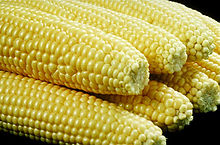
The average height of a maize plant is 3 metres, while some wild strains can reach 13 metres and the highest reported plant was 14 metres. The stem is usually made up of 20 internodes. The leaves emerge from the nodes on the stalk, alternately on opposite sides, and have complete margins.
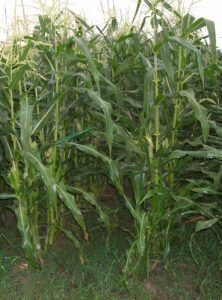
The tassel, is found at the stem’s top. Tassels have anthers on them, once the tassel is fully grown and conditions become dry and warm, anthers burst and releases pollen. The majority of pollen falls within a few metres of the tassel because maize pollen is anemophilous (distributed by the wind).
Coconut
Coconuts can be differentiated from other fruits on the basis of liquid present inside the endosperm. The mature and ripe coconut can be eaten as seeds.
The complete coconut has multi- purpose usage like in cosmetics, food and fuel. The entire coconut is a drupe in terms of botany. The shell and husk of coconut is used in building materials. Dried seeds of coconut has many nutrients and sold as Copra in grocery stores. The ripe seed’s interior flesh, the coconut milk is derived from it.
Potato
Potato are perennial herbs and can grow upto the height of 60cm depending upon the species. Leaves of potato plant dies after flowering and tuber formation.
Yellow stamen is present on flower having different colors of petals like white, pink, red, blue or purple. Potato plants are generally cross-pollinated by insects( entomophily). Bumblebees are mainly responsible for the cross-pollination that carries pollen grain from one plant to other, however self pollination is also common.
Sunflower
They are tall and perennial plants that attains a height upto 300cm in some species. The leaves of sunflowers are large, coarsely pointed, rough, and alternating.
Sunflower plants tilt during the day to face the Sun before blossoming in order to receive more sunlight for photosynthesis.
Pineapple
Pineapples develop as a tiny shrub, with the unpollinated plant’s individual flowers fusing to generate many fruits.
The plant is usually propagated from a side shoot or an offset generated at the top of the fruit, and it matures in about a year.
Wheat
Wheat is a staple food of the world. It is rich in carbohydrates and fibre. It is commonly farmed for its seed.
It is the most important source of vegetable protein in human food worldwide, with a protein content of over 13%, which is relatively high when compared to other main cereals.
Onion
The onion is a vegetable which belongs to the genus Ailum. It forms bulb like structure under the ground and is mostly grown all over the world.
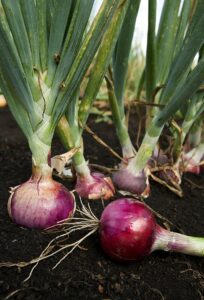
The bulb of the onion starts to swell when a specific day-length is achieved. Onion plants grow faster if, onion bulbs are planted instead of seeds. But, the onions formed from seeds are much stronger than the onions formed from young bulbs.
Coriander
Chinese parsley, dhania, or cilantro are other names for it. Although all parts of the plant are edible, the fresh leaves and dried seeds have historically been utilized in cooking. Coriander seeds are the dry fruits. The terpenes linalool and pinene give the seeds a lemony citrus flavour when crushed. Warm, nutty, spicy, and orange-flavored, it’s been described.
Avocado
It is also called alligator pear. Avocado fruit has dark brown skin with yellowish and greenish mesocarp. It has buttery consistency and nutty flavour. Avocados’ high fat content and silky texture make them a versatile and multipurpose item that is widely used in Mexican cuisine.
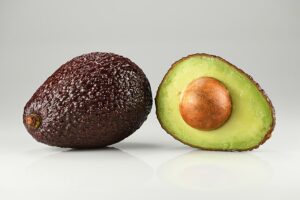
Lavender
In some regularly farmed species, they are straightforward. The plant is primarily produced for the manufacture of lavender essential oil.
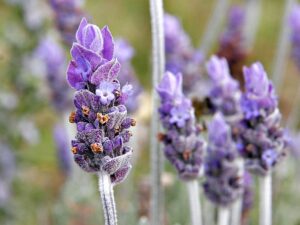
English lavender produces a sweet-smelling oil that can be used in balms, salves, fragrances, cosmetics, and topical uses.
Artichoke
This tall vegetable has silvery, glaucous-green long leaves that are deeply lobed. It has a big crown with triangular scales. Edible bud is present in the crown. The flower emerges from the bud. Each florets are purple in color.
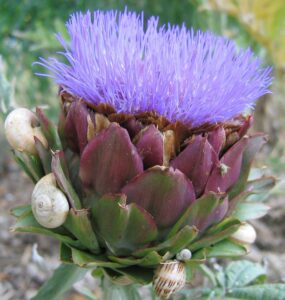
Pecan
In the southern United States, particularly in Georgia, the tree is farmed for its seed. The seed is an edible nut that can be eaten as a snack or utilized in recipes like praline candy and pecan pie.
Pine
Pine trees have a long lifespan. The anemophilous seeds are typically tiny and winged (wind-dispersed). When the cones reach maturity, they normally open to release the seeds. In bird dispersing species, the seeds are only dispersed when the cone is broken by the bird.
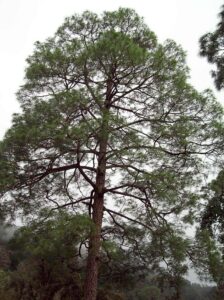
Ginkgo biloba
Ginkgo trees are big trees with an angular crown and long, erratic branches that are usually firmly rooted and resistant to wind and snow hardy.
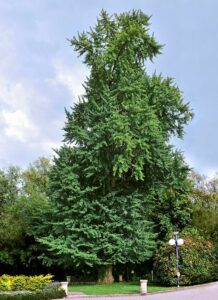
Extract of ginkgo leaf is used as a diet supplement but there is no such scientific evidence that it prevents ailment and improves health.
Broccoli
Broccoli is a cabbage-like edible green vegetable. It can be eaten fresh or cooked. Vitamin C and vitamin K are very abundant in broccoli. Broccoli thrives in temperatures between 18 and 23 ° C on a regular basis.
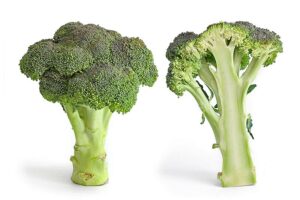
Summary
To wrap up this post, we conclude that spermatophyta or seed plants have tremendous variety in nature. Some plants have naked seeds(Gymnosperms) while some have seeds enclosed (Angiosperms). Some plants are fruit bearing while some bear only flowers. Some are eatables and some are ornamental or have curative uses.
Also Read:
- Chromosome functions in animal cell
- Is dna replication antiparallel
- Eye anatomy
- Motile bacteria examples
- Does facilitated diffusion require energy
- Are chromosomes eukaryotic
- Lobster characteristics
- Facilitated diffusion example
- Do guard cells have chloroplasts
- Is endocytosis pinocytosis

Hi, I am Saif Ali. I obtained my Master’s degree in Microbiology and have one year of research experience in water microbiology from National Institute of Hydrology, Roorkee. Antibiotic resistant microorganisms and soil bacteria, particularly PGPR, are my areas of interest and expertise. Currently, I’m focused on developing antibiotic alternatives. I’m always trying to discover new things from my surroundings. My goal is to provide readers with easy-to-understand microbiology articles.
If you have a bug, treat it with caution and avoid using antibiotics to combat SUPERBUGS.
Let’s connect via LinkedIn: